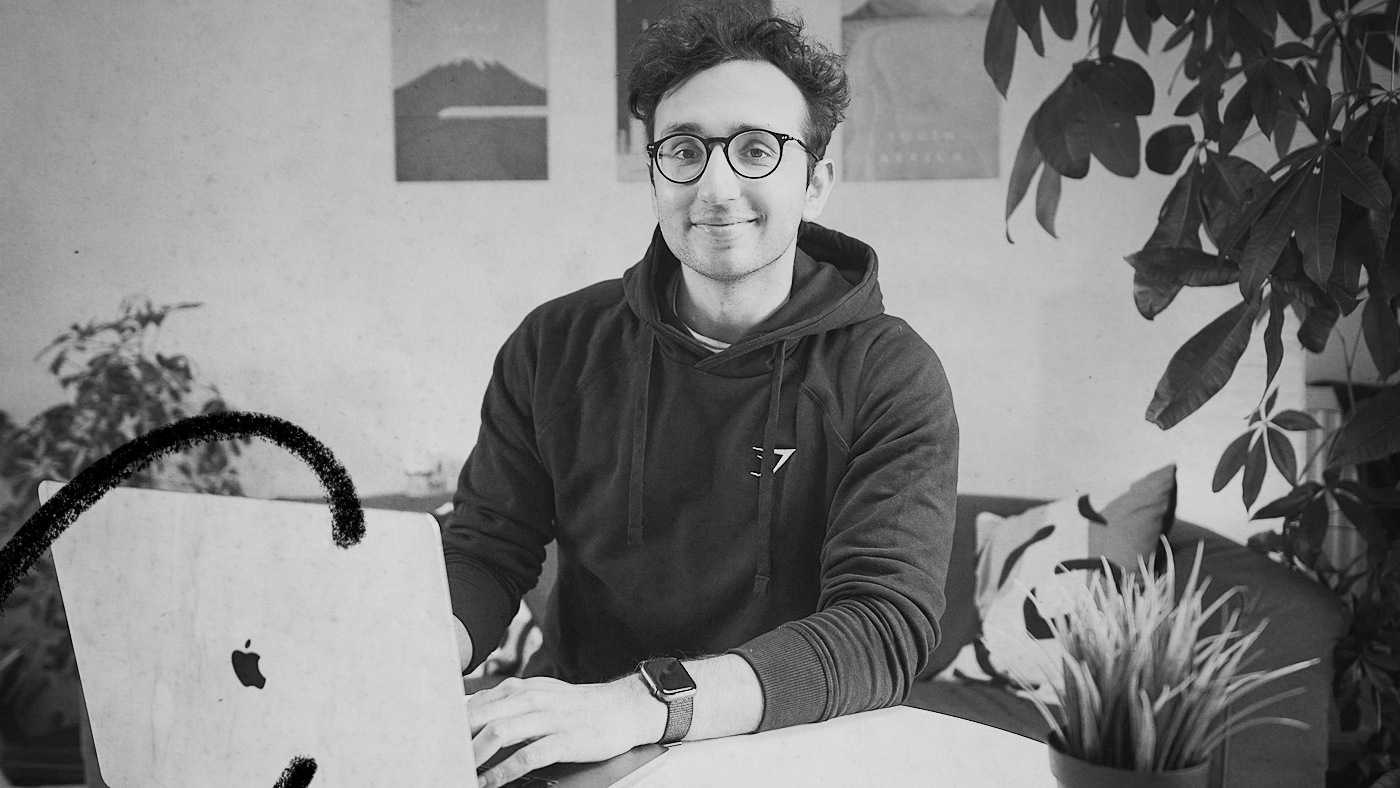
When I think about being a doctor, I think about years of endless study, and all the grueling training it takes to get into the field. I picture living life in a labcoat, running through hospital corridors from ER to lab to surgery and back again — from patient to patient, diagnosis to diagnosis.
I imagine a life where maximum multi-tasking is business as usual, and life and death decisions are all in a day’s work.
I have nothing but awe for the intense, all-consuming work doctors do. It’s not just a job. It’s a profession. A vocation. A calling.
Now imagine doing all of that – while secretly living a double life:
Dr. Ali Abdaal has been practicing medicine – while at the same time building a wildly successful productivity YouTube channel, with well over a million subscribers.
He’s a healer by day — but by night, he’s a celebrity guru for anyone looking to perfect their productivity, tech, and study habits.
Either one of those achievements would be a mind-boggling challenge for anyone to pull off. But Ali Abdaal isn’t your average doctor — nor is he your average productivity YouTuber.
In fact, Ali is someone who says, “I worship at the altar of productivity” — and therein lies the secret to his success: he combines his lifelong fascination with productivity and workflows with a medical scientist’s patience for clinical trials and close observation.
He surgically removes the systems that don’t work for him, and implants new ones that do – then he shares his results with his legions of followers.
His methodical discipline got him through medical school, and it’s taken him to the top of the world of productivity.
So how does he do it?
In this interview we dive into Ali’s system for making videos — how he uses Notion for everything from organizing ideas to coming up with thumbnails.
We also go through the other productivity hacks he’s picked up along the way — like how he organizes his book notes, and how he keeps a list of dreams he wants to fulfill.
There’s a lot to cover, so let’s dive in!
Ali introduces himself
My name is Ali Abdaal, and I’m a doctor and a productivity YouTuber.
That means I’ve been working as a medical doctor in Cambridge for the last two years, and I also have a YouTube channel where I talk about the latest and greatest in productivity.
I started my YouTube channel three years ago as a way to give advice to medical school applicants, but over time it has evolved – I now have well over a million subscribers to my videos about the wider world of tech and productivity.
Both of my careers reflect my interest in doing what I can to help people lead happier, healthier, more productive lives.
As much as I love being a doctor, I’ve just started a sabbatical from my career in medicine so I can spend more time focusing on creating content for my YouTube channel, podcast, email newsletter, and blog.
In the process of growing my YouTube channel, I’ve managed to build my own system for how I bring a video from concept to publication. Here’s how I work.
The Genesis of a YouTube Video: starting with an idea
Every YouTube video I publish begins with an idea – and as soon as I get an idea, it goes straight into Notion.
Sometimes, ideas come up organically – maybe while I’m in the shower or at the hospital. Other times, I might go mining for inspiration in other people’s work.
I keep a list of people and sites that might influence my content in the future – Farnam Street, trends.co, even the Everything Substack – I keep all kinds of stuff in there.
Once an idea is fleshed out enough for me to know I’m going to work on it, I’ll throw it into a database in Notion called Videos. You can see that there are loads of video ideas in there – 133 at the moment.
I’ll record the name of the video, assign it to a writer (either me or someone on my team), I’ll give it a status, and if the video has a sponsor I’ll make sure that’s noted.
When I approve and decide to move forward with an idea, it moves into the scheduling database. Usually, my team and I work from the calendar view:
At the start of each month, I'll have a Zoom call with the team to plan out what our content schedule is going to be. As the month progresses, of course, things tend to change around.
But in general, the plan is that we release a video every Tuesday, Friday, and Sunday.
Of all the videos we do, however, the most important of those videos is Tuesday’s sponsored video.
All my scheduling starts with sponsored videos
The single most important thing in my YouTube business is making sure our sponsored videos get out on time.
Sponsored videos are really the only hard deadlines I have – they’re a vitally important part of our revenue. Everything else I do I can be flexible about.
My sponsorships are entirely handled by my agency – they represent me and help me to monetize my YouTube channel by helping me build partnerships with companies that will pay for a plug in one of my videos.
The benefit of working with a good agency is that they find my sponsors and book them for me – I don't have to worry about it. I've said to my agency that I want to have a sponsored video every Tuesday, and they do their best to book me a sponsor for every single one.
I'll get an email from them saying something like, ‘Hey, Notion wants to sponsor four videos.’ So I’ll add them to my Sponsored Videos Schedule in Notion:
Notion is actually sponsoring three videos coming up – one each in October, November, and December.
Sometime between now and then, I’ll need to figure out what to do for all of those.
I use templates to plan my videos in Notion
Whether a new video idea is going to turn into a sponsored video or not, I have a series of templates I work through to help me plan it out fully, get it scripted, and bring it to publication.
Here’s the template for a video I released a couple of months ago, about why I listen to podcasts at 2x their normal speed.
To get the process rolling, there is a field for ‘Writer’, who will be me, or perhaps one of my team members.
Next, ‘Publish date’ is fairly flexible – unless, of course, it’s a sponsored video.
The ‘Status’ field indicates where the idea is in the process of going from idea to publication.
Under ‘Video Intention’, I classify what type of video it is. When it comes down to it, there are only three types of video on YouTube: videos designed to be ‘Discoverable’ to a new audience, ‘Community’ content to appeal to your existing audience, and ‘Sales’ videos to get someone to stop surfing around YouTube and click into something else.
This would likely be a ‘Discoverable’ video, because I want people searching to happen upon it.
The aim with Discoverable videos is simply to get the audience to watch until the end, and then get them to stick around to watch another video after that. In ranking videos and matching them for recommendation to potential viewers, the YouTube algorithm rewards video watch time and overall session watch time.
For me, just knowing the video is Discoverable already puts me into the mindset that I need to make the video snappy – I need to present myself well, and not ramble too much. I also need to avoid inside jokes that only my existing viewers would get, because I have to appeal to any new audience this video might draw.
Moving down the list, ‘Sponsor Date’ is a link to the Sponsored Video database.
A great title is vital
On YouTube, the title and thumbnail of a video are so important that you want to think about them before you even start shooting. Usually I insist that we generate at least ten to twenty potential titles for every single video.
For example, that video about how I listen to things at 2x speed was eventually published to YouTube with the title, ‘One Simple Habit That Changed My LIfe’. You can see in Notion where we went through nine different titles in order to find the one that worked:
We went for a variant of option number 7, ‘The Habit That Changed My Life’, after considering ‘The Habit that Changed my Life’, ‘The Habit that CHANGED my Life’, and ‘This ONE Habit CHANGED my Life’.
When we’re shooting the videos, we make a point of taking lots of photos for potential thumbnails. For this video, we went with a picture of me holding an AirPod, looking sultrily at the camera, and pouting a little bit.
You can see some of the thumbnail ideas that we didn’t use on this Notion page:
I know it all sounds a bit cringey and clickbaity, but the point is that finding the right thumbnail builds excitement and intrigue, and most importantly, attracts clicks.
And here are the various photos I shot for this video.
My approach to storytelling
The next section in the template is all about the story: it asks questions like ‘who is the character’ and ‘what do they want’ and ‘how are they transformed by the experience of finally getting it’. Answering these questions helps us ground the video in storytelling fundamentals before we write the script.
We don't always fill it in (although we probably should, because I know it would make the videos better). But just having it there reminds us that we need to be mindful about the best way to tell the story.
In the first ten seconds of a video, you really have to deliver on the premise in the title, so viewers know the video is worth watching.
It’s vital that you build a narrative – and set it up quickly – which is why my Notion template includes a series of seven questions that help us do just that.
We don't always fill it in (although we probably should because I know it would make the videos better). But just having it there reminds us that we need to be mindful about the best way to tell the story.
We need to be clear on who the story is about, what they want, and why they can’t get it. The dramatic tension comes next – what’s at stake if they don’t get it?
Then, the story narrative should explore how they managed to get what they wanted, and finally, how they’re transformed by the experience of finally getting it.
I’ve highlighted numbers four and seven , because those are areas that most would-be storytellers tend to ignore.
I also keep Story Structures in each entry, in case I need help thinking about how to construct my script. I use a classic storytelling form called ‘The Hero’s Journey’ quite a bit.
That narrative arc depicts a character who is living a particular status quo, but is suddenly forced to take action and enter into unfamiliar, uncharted territory. They must adapt and take action.
Victory comes after some type of an inward realization occurs – at the end, the hero is the same person, but forever changed by the journey.
I used The Hero’s Journey to help me put together the script for my ‘One Simple Thing That Changed My Life’ video.
In a nutshell, the video tells the story that I – the hero on this particular journey – had too much to do, too much information to take in, and not enough time to do it in. I work as a full-time doctor, plus I have my whole YouTube life – so I needed a system to save myself time.
One day, I discovered listening to podcasts at 2x speed, and it transformed my life by completely amplifying my productivity.
And the hook is that in this video, you’re going to learn that too – and have your lives transformed just as mine was.
Keeping viewers watching
Once we’ve filled out the template and written the script, then it’s time to actually shoot and edit the video. When that’s done, we come to uploading and publishing it.
I have another checklist in Notion for that process, but we don’t really use it much anymore – it’s become second nature at this point.
One of the things you have to keep in mind when you’re making videos for YouTube is that while the content must be enjoyable and relevant to the viewer, ultimately the metrics of success are structured around how much of the video you get them to watch.
As videos start, you begin at 100% retention of viewers. But within five seconds, you’re down to 70% – people click off after the ad because they can’t be arsed to stick around for the rest of the video.
As the video continues, there’s a sort of slow burn of viewer attrition. I normally end up at between 10% and 15% of viewers who will actually watch through to the end.
Improving that retention rate is a very big ROI metric. If you improve retention, it means first of all that you’ve crafted a more compelling video.
It also means that you’ve increased session watch time, too – it’s good for the algorithm, and it’s good for the audience.
At the end of the video, you want to point the viewers who are still watching towards yet another video or playlist to get them to continue watching.
So that’s my system for making videos with my team. But I also have a few other systems that help me with my own personal productivity.
I manage my to-do list in Things
Things is my to-do list manager of choice, and I use that to keep track of all my projects and delegate stuff to my team.
Each project I’m working on becomes a Project in Things. As new to-dos come up, I’ll add them to the Project they belong to, so I don’t lose track of them.
I usually chuck new to-do items into Inbox, while I run my day to day work out of Projects – the list of things I’m currently working on, which you can see just under ‘Trash’ in this screenshot:
Under my active Projects are ‘Areas’, where I keep track of activities that I engage in over time. At one point, I used to keep my various projects under their relevant Areas, but something that Tiago Forte says – which I very much agree with – is that Areas can then become a really long and annoying list.
It's much nicer for me to just have the Projects at the top, and then I can reorder them based on their priority, and on how much attention I want to give each one on any given day.
As for the individual Areas, for example, under ‘People’ I keep track of friends and their birthdays. ’Writing’ is where I might put an idea for a Tweet. ‘Medicine’ was relevant when I had a job – but not so much since I started my sabbatical! ‘Ingestion’ is where I put the things that I want to read, watch, or listen to – books, podcasts, or documentaries.
And ‘Hustle’ is just what I called all business-related stuff – just me being ironic, I guess, considering how much flak ‘toxic hustle’ is getting these days!
Hating on the hustle
Speaking of toxic hustle, it seems like it’s fashionable to hate on ‘hustle culture’ and ‘productivity culture’ these days. Some people even say I’m part of what’s wrong with it.
To be honest, I kind of get a kick out of the fact that some people hate on my videos – but I don't really spend that much time thinking about it.
That video I was describing – about how I consume podcasts and TV at two or more times their the normal speed – got a huge negative reaction when it hit YouTube. People said, ‘God, how can you do that? You need to relax!’
But at the end of the day, it’s just a preference. I simply prefer TV to go faster – I think it’s a bit slow!
I just want to squeeze as much as possible out of the minutes and hours I spent consuming media.
You can do whatever the hell you want – as long as you're living intentionally and doing the stuff that you want to do, then you do you.
Maybe I am a workaholic, but making videos is fun for me. Getting things done in ways that are efficient is enjoyable and satisfying for me, and it’s part of how I live an intentional life.
I use Roam to take book notes
I've landed on using Roam to take book notes, but I’m planning to switch away from it because I want to use Notion for everything.
For the time being, though, here’s how my system works:
When I finish a book, I’ll manually stick it in my Book Notes page. I’ll enter the book by the date I’ve completed reading it, and its title.
Each book gets its own page in Roam, and it’s marked with the ‘Nibble’ hashtag. Anything that I read, watch, or listen to starts off as a nibble, whether it's a book or a blog post or a podcast or whatever.
It stays a nibble until I digest it – that is, until I make detailed notes on it.
I can see that there are quite a few undigested nibbles in there, because I keep putting this part off – to the point where I've told myself, ‘Ali you're not allowed to read any more nonfiction books until you digest your nibbles!’
When I do get around to that, I take notes in my own words. I’ll make important parts of that into an ‘evergreen note’ based on the Smart Notes system.
One podcast that I did that well with – where I was at peak productivity – was Naval Ravikant’s conversation with Samantha Ryan.
I got a transcript of the episode and I went through all the things that resonated with me and wrote up evergreen notes on them. For example, certain concepts stood out to me, like ‘Happiness is hackable’ and ‘Self-improvement shouldn’t feel like work’, so I excerpted text from the transcript and entered it here.
Here are some evergreen notes on the phrase ‘Know Thyself’, where I collect any references to that phrase that I come across:
Finally, I have an index page called ‘Trees of Knowledge’. I make it a point that all my evergreen notes have to fit in there somewhere.
I definitely have room for improvement
I’m constantly working on ways to better my own productivity.
I confess that I don’t have a good weekly review process. And my overall system still feels very untidy to me.
Here’s a great example: if I want to quick-capture something, there are multiple different places where I might stick it.
The most common place I do that is Drafts. But sometimes I’ll quick-capture into Notion, and sometimes to Editor, and sometimes I just use my brain to remember where I put stuff – which is not ideal.
I'd love to have one central place with a system for this, but for now, this is how I’m working.
I’m also going through Tiago Forte’s Building a Second Brain course again. The first time around, I didn’t attend all the live sessions or watch all the videos. This time, I’m serving as an alumni mentor, which I’m hoping will force me to engage with the content with a little more focus than before.
But you know, when you're into this productivity stuff, you try all kinds of different things. Some of them stick… and some of them don’t.
The joys of unemployment
I'm a little over a month into my sabbatical, and it feels pretty great – but I have to say that I thought I’d be way more productive than I’ve been so far.
In my last three months of working full-time as a doctor, I was cranking out three YouTube videos a week. But since I’ve become unemployed, my upload schedule has dropped – down to only one or two videos a week.
But I was really surprised to see Parkinson’s Law in action in my own life: it turns out that I can get just as much done on a random evening as I can in a whole day, if I give myself the whole day to do it.
I’m slowly working to improve that.
The point is that I'm still finding more and more ways to tweak the whole productivity thing.
There’s still loads more to get done, more patients to treat, more videos to make – and besides, as you can see, I have a whole list of dreams to live!
This post was co-written by Dan Shipper and Kieran O’Hare.
The Only Subscription
You Need to
Stay at the
Edge of AI
The essential toolkit for those shaping the future
"This might be the best value you
can get from an AI subscription."
- Jay S.
Join 100,000+ leaders, builders, and innovators

Email address
Already have an account? Sign in
What is included in a subscription?
Daily insights from AI pioneers + early access to powerful AI tools



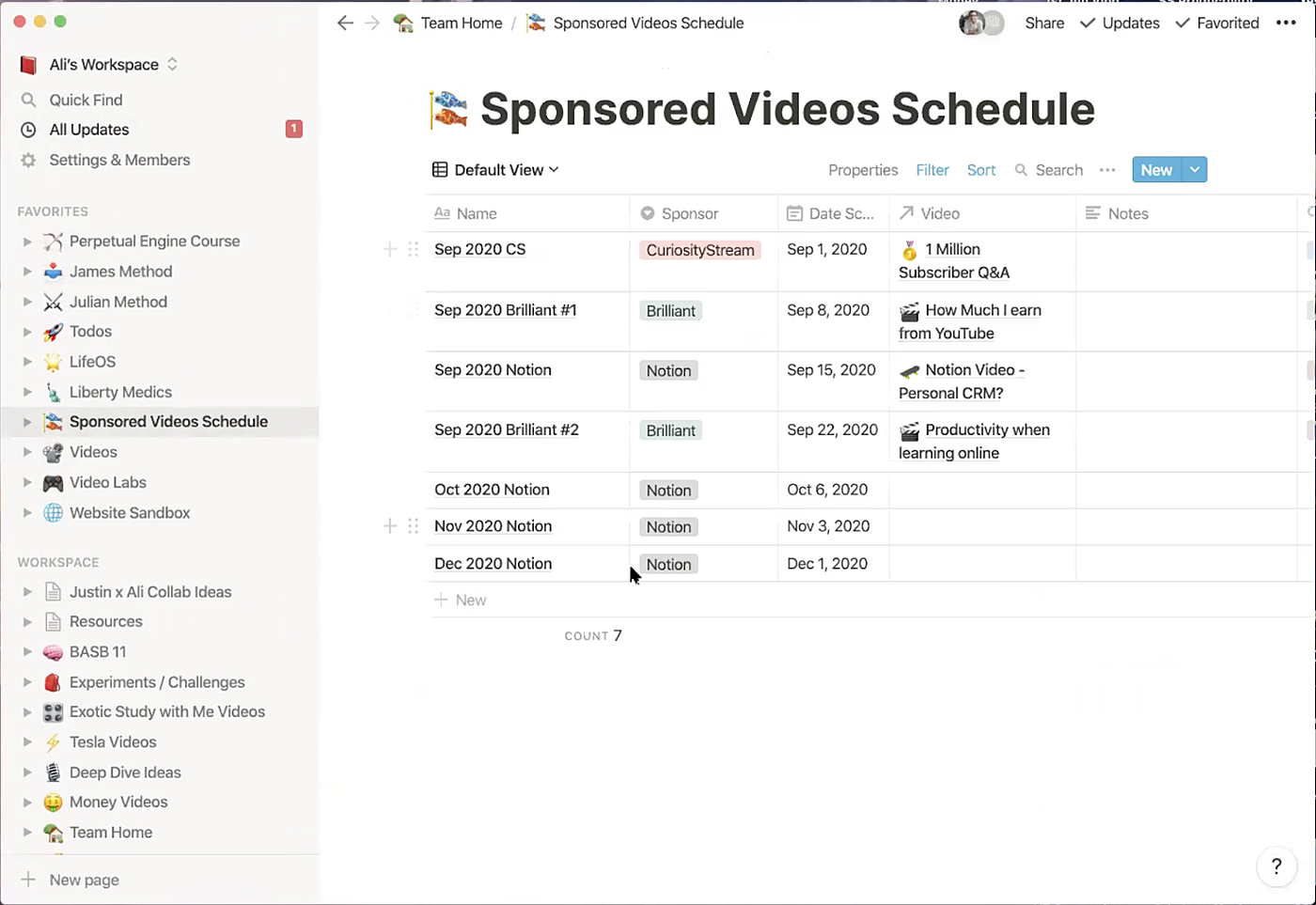



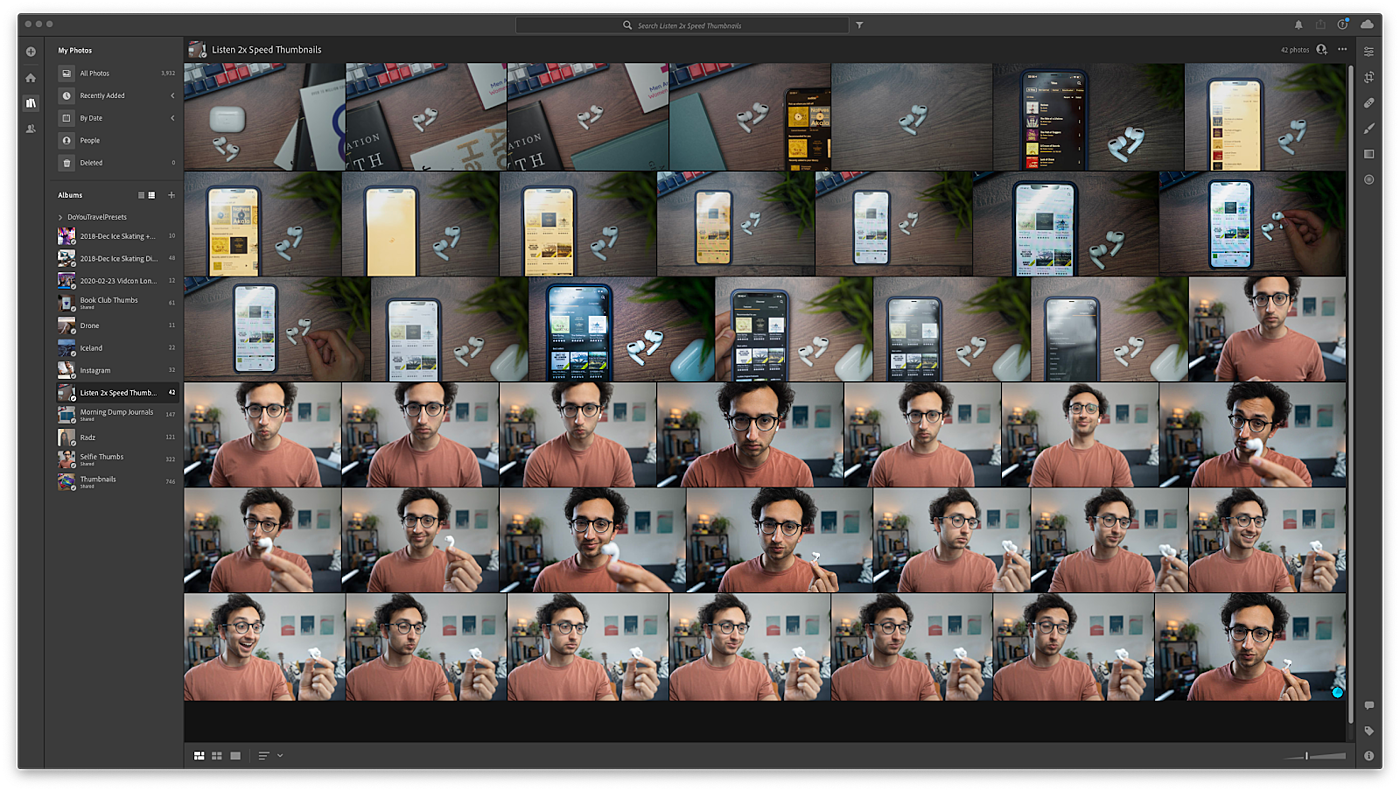



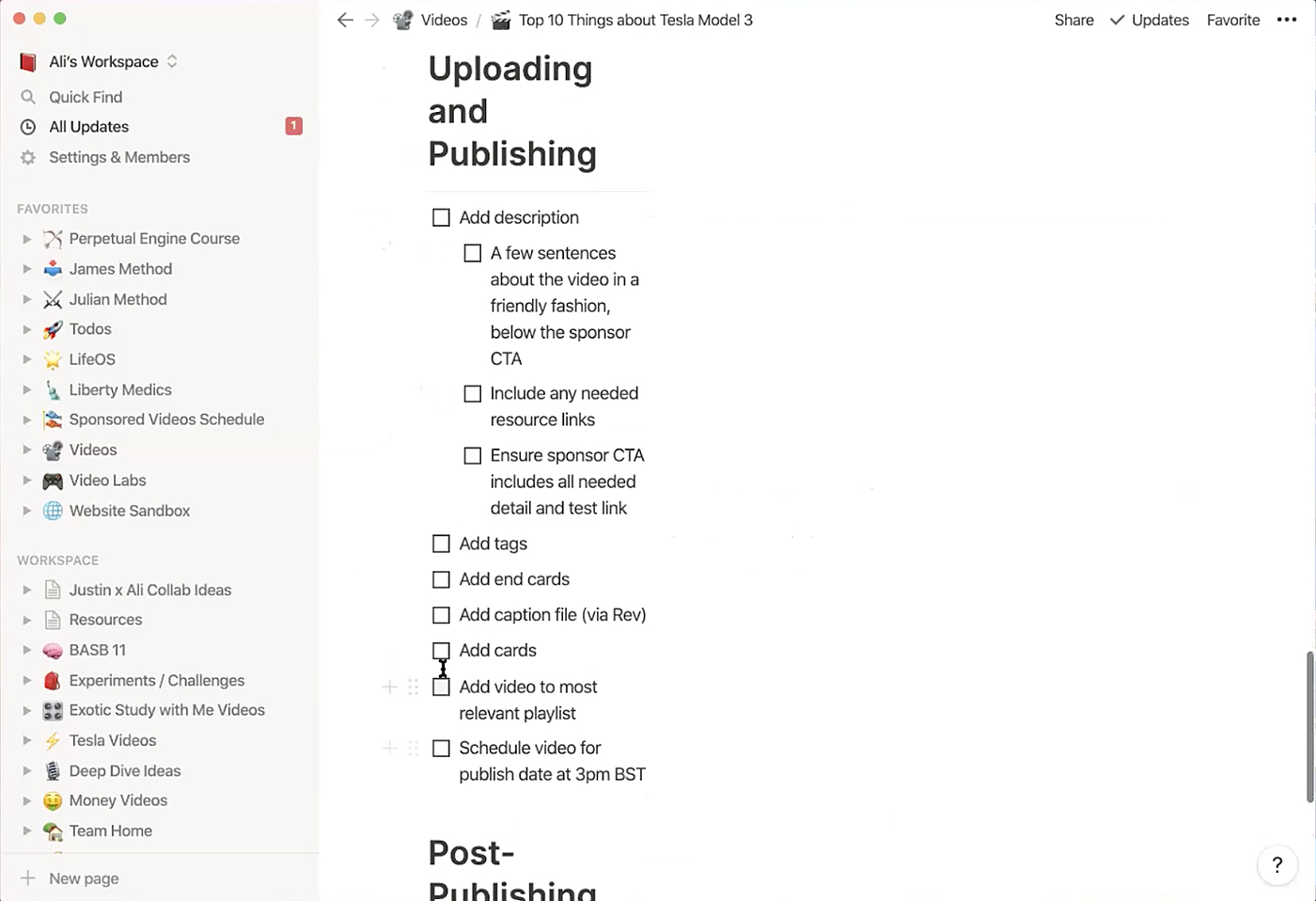







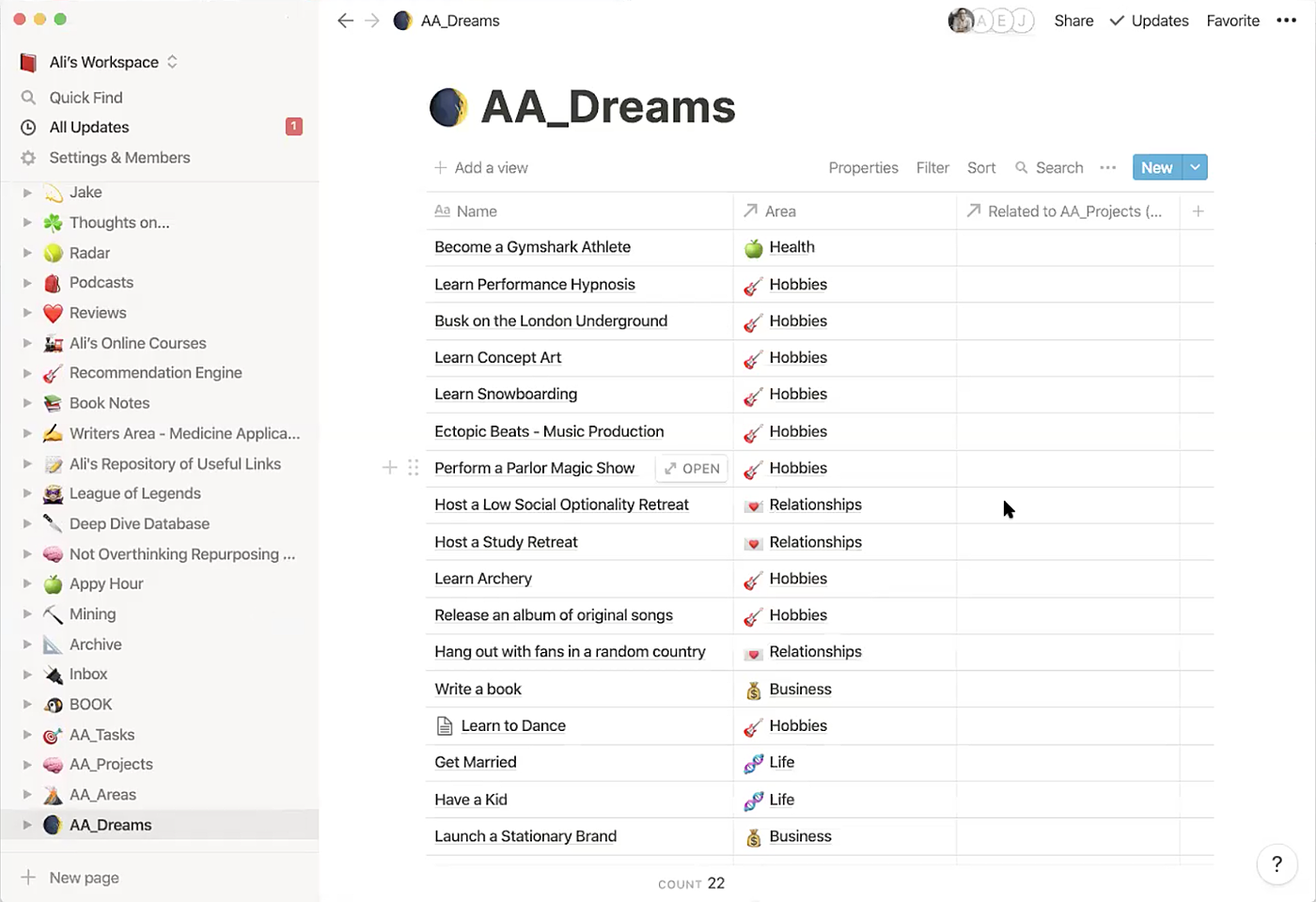










Comments
Don't have an account? Sign up!